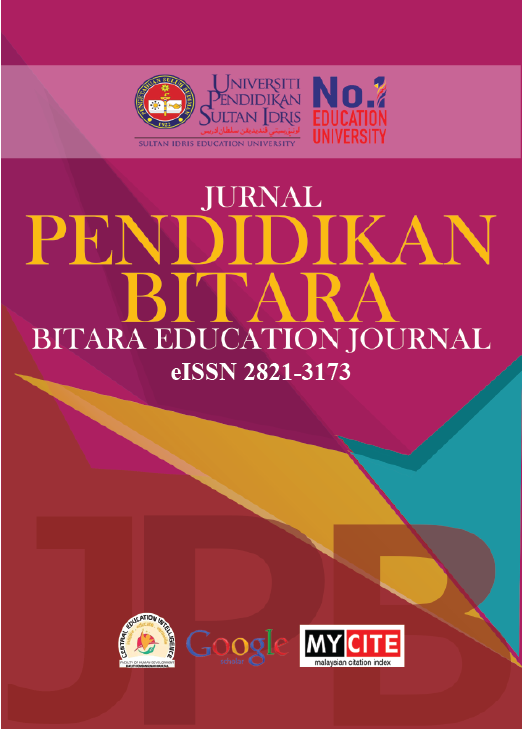Reconnecting Learning: Empowering remediation for at-risk Dyscalculic Pupils
DOI:
https://doi.org/10.37134/bitara.vol16.2.1.2023Keywords:
dyscalculia, ChildAbstract
Dyscalculia is a specific mathematics learning disability which can lead to a diverse range of difficulties with mathematics. After we identify the pupils with dyscalculia, it is essential to help them to master the basic numeracy skills, so they can further their study of mathematics in higher education. Reconnecting Learning is an instructional-based intervention that aims to help at-risk dyscalculic pupils to learn basic numeracy. It was developed based on two theories from mathematics education and special needs education, Tall's (2013) theory and Feuerstein's (2015) structural cognitive modifiability theory.
Downloads
References
Bird, R. (2017). The dyscalculia toolkit: Supporting learning difficulties in maths. SAGE Publications.
Butterworth, B. (2019). Dyscalculia: From science to education. Routledge.
Deruaz, M., Dias, T., Gardes, M., Gregorio, F., Ouvrier-Buffet, C., Peteers, F., & Robotti, E. (2020). Exploring MLD in mathematics education: Ten years of research. The Journal of Mathematical Behavior, 60, 100807. https://doi.org/10.1016/j.jmathb.2020.100807
Emerson, J., & Babtie, P. (2014). The dyscalculia solution: Teaching number sense. Bloomsbury Publishing.Feuerstein, R., Falik, L. H., & Feuerstein, R. S. (2015). Changing minds and brains: the legacy of Reuven Feuerstein: Higher thinking and cognition through mediated learning. Teachers College Press
Feuerstein, R., Feuerstein, R., & Falik, L. H. (2015). Beyond smarter: Mediated learning and the brain's capacity for change. Teachers College Press.
Fu, S. H., & Chin, K. E. (2017). An online survey research regarding awareness of dyscalculia among educators in Sandakan district, Sabah. International Journal of Academic Research in Progressive Education and Development, 6(2). https://doi.org/10.6007/ijarped/v6-i2/2891
Haylock, D., & Manning, R. (2019). Mathematics explained for primary teachers (6th ed.). SAGE.
Kunwar, R., & Sharma, L. (2020). Exploring teachers’ knowledge and students’ status about dyscalculia at basic level students in Nepal. Eurasia Journal of Mathematics, Science and Technology Education, 16(12), em1906. https://doi.org/10.29333/ejmste/8940
Morsanyi, K., van Bers, B., McCormack, T., & McGourty, J. (2018). The prevalence of specific learning disorder in mathematics and comorbidity with other developmental disorders in primary school-age children. British journal of psychology (London, England : 1953), 109(4), 917–940. https://doi.org/10.1111/bjop.12322
Tall, D. (2013). How human learn to think mathematically. Cambridge University Press.
Downloads
Published
Issue
Section
License
Copyright (c) 2023 Sai Hoe Fu

This work is licensed under a Creative Commons Attribution-NonCommercial-ShareAlike 4.0 International License.





